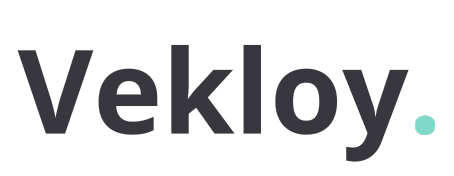What Is SaaS Application Development? A Beginner’s Guide

Let’s rewind to 2010 for a moment. We had Angry Birds, floppy disks still haunted office drawers, and someone (probably Dave from accounting) was shouting, “Did you install the software yet?” Fast forward to today—and that phrase sounds as outdated as a fax machine in a coworking space. Why? Because now, SaaS based application development is ruling the digital realm. And we’re here for it—fully caffeinated and slightly obsessed.
So, if you're scratching your head wondering "What the heck is SaaS app development?"—welcome. You’re in the right rabbit hole. Let’s dig in (with minimal jargon and maximum clarity).
SaaS: A Fancy Acronym That Just Means “Software Without the Headache”
SaaS stands for Software as a Service—which sounds suspiciously like software’s PR makeover. And in a way, it is. Unlike traditional software that demands installation, updates, and a PhD in troubleshooting, SaaS is hosted on the cloud and accessed through a browser. No downloads. No updates. No cries for IT help. (We’re looking at you, Dave.)
In SaaS based application development, developers build apps that live in the cloud—where users can pay monthly or yearly and access the software on-demand, like a Netflix subscription for productivity tools.
But What Exactly Is SaaS Based Application Development?
Great question—and we love a good breakdown. At its core, SaaS application development is the process of creating software products that:
-
Run entirely on the internet
-
Are centrally hosted (usually in the cloud)
-
Are subscription-based
-
Offer multi-tenancy (one app, many users—no roommate drama)
These aren’t just glorified web apps with a login screen. They’re powerhouses of scalability, security, and simplicity. And the best part? SaaS products can serve startups, enterprises, or that mysterious person who still uses Internet Explorer—all without individual installs.
SaaS vs Custom Software Development: Mortal Enemies or Secret BFFs?
Here’s where it gets juicy. People often pit SaaS against custom software development, like it's some kind of tech-world Game of Thrones. But in reality? They're more like Sherlock and Watson—better together.
Custom software development is the art (yes, art) of building software tailored to a business’s exact needs. Think of it like getting a suit tailored instead of buying one off the rack. Now, when you combine that with SaaS principles, magic happens. Suddenly, your tailored suit can be rented, resized, and delivered anywhere in the world—automagically.
At Kanhasoft, we often blend both approaches: building custom SaaS platforms for clients who want flexibility, scalability, and let’s be honest—a break from constant maintenance.
Our First SaaS App: A Comedy of Errors (and Success)
Anecdote time. Our first brush with SaaS app development involved a startup with a wild idea: a subscription-based platform to teach people how to care for bonsai trees. Quirky? Yes. Challenging? Absolutely. But also—eye-opening.
We learned the hard way that multi-tenancy is no joke, data privacy laws need a full-time babysitter, and users will forget their passwords more than their anniversaries. Yet, with each sprint and server hiccup, we realized: SaaS was the future—and not just for plant lovers.
Why Everyone (Including Your Competitors) Is Going SaaS
Let’s count the reasons companies are jumping on the SaaS train faster than developers jump on the dark mode trend:
-
Lower Costs – No infrastructure to manage. Just good ol’ cloud hosting.
-
Scalability – Add users, features, and storage like it’s Legos.
-
Accessibility – Use it from any device, anywhere (except maybe Mars).
-
Regular Updates – New features rolled out like hotcakes—without bothering the user.
-
Better User Engagement – With analytics, integrations, and constant iterations.
If you’re in the software business—or want to be—SaaS based application development isn't just a buzzword. It’s a blueprint for staying relevant.
SaaS Tech Stack: AKA The Cool Toolbox
Every great SaaS app is built on a solid foundation. Here’s the tech stack we often swear by (after much trial, error, and maybe some midnight tears):
-
Frontend: React.js, Angular, Vue (depending on your vibe)
-
Backend: Node.js, Python, PHP (Laravel fans, unite!)
-
Database: PostgreSQL, MongoDB, MySQL
-
Hosting: AWS, Google Cloud, Azure
-
Authentication: OAuth, JWT
-
Payment Gateways: Stripe, Razorpay, PayPal
Of course, this varies based on project needs—but no matter the stack, scalability, security, and UX reign supreme.
Final Thoughts: SaaS Isn’t a Trend—It’s a Transformation
At Kanhasoft, we’ve seen firsthand how SaaS based application transforms businesses. From healthcare platforms to educational tools to eCommerce dashboards, SaaS has opened doors for global access, lightning-fast deployment, and joyful user experiences (yes, we said “joyful”).
And as the demand for custom software development grows, pairing it with SaaS is like combining peanut butter with chocolate—delicious, efficient, and frankly, unstoppable.
So if you're still on the fence—consider this your sign. Or better yet, let’s build your SaaS idea into something scalable, secure, and oh-so-satisfying. (Without yelling at IT.)
FAQs About SaaS Application Development
Q1. Is SaaS suitable for startups?
Absolutely. SaaS apps offer affordability, scalability, and speed—making them perfect for resource-strapped startups aiming to scale quickly.
Q2. Can SaaS be customized for different industries?
Yes. With custom software development, SaaS can be tailored for industries like healthcare, finance, education, and even bonsai training. (We speak from experience.)
Q3. What are the biggest challenges in SaaS development?
Multi-tenancy, data security, compliance (hello, GDPR), and constant user demands. But with the right dev team, these aren’t deal-breakers—they’re just checkpoints.
Q4. How do SaaS apps make money?
Through subscription models (monthly/yearly), freemium upgrades, user-based pricing, or even good old ads.
Q5. Do SaaS apps work offline?
Generally, no. SaaS apps need internet connectivity—but progressive web apps (PWAs) and caching strategies can offer partial offline capabilities.
What's Your Reaction?



















































